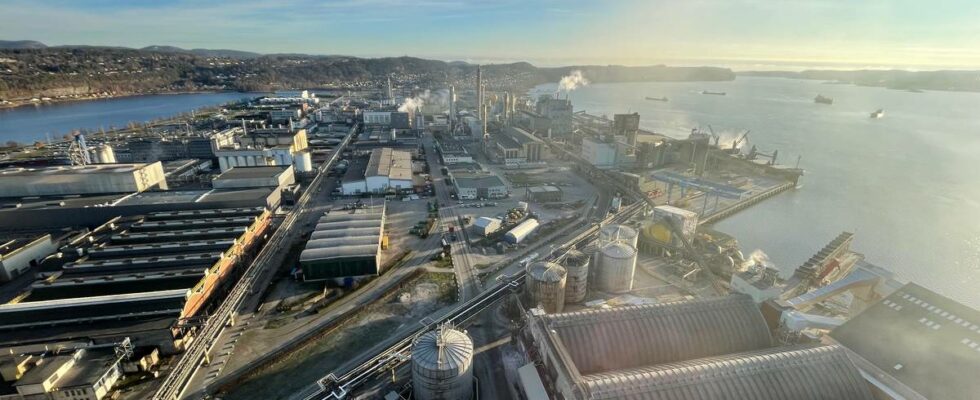Yara has wanted more power in an area where several players want more power. The Herøya industrial area in Porsgrunn is 1.8 square kilometers in size and one of the country’s largest. In a dialogue meeting on Wednesday, Statnett, Lede and Yara, among others, discuss plans for the development of the power grid in Vestfold and Telemark. Yara’s ammonia factory on Herøya emits more than 800,000 tonnes of CO₂ annually. Photo: veronica westhrin / news Gunnar Løvås, executive vice president for power system and market at Statnett, among other things, presented graphs showing how big the queue was at the power capacity. – Major downscaling He also said that Yara and the battery manufacturer Vianode have scaled back their plans for electrification. – Yara has reduced its consumption plans which have been reported to Statnett by approximately 500 megawatts, says Løvås. Gunnar Løvås, executive director of Statnett, at a dialogue meeting in Porsgrunn on Wednesday. Photo: Lars Tore Endresen / news It is a downscaling from 600 to 100 megawatts. – It is a major downscaling, which is of course a shame for those who have worked against it, but at the same time it creates opportunities for others to take over that power, says the Statnett director. – Vianode had also applied for approximately 250 megawatt capacity, and received it from us in the reservation queue. But they have withdrawn their plans, he says. Together, Yara and Vianode have scaled back the plans by 750 MW in the core of Grenland. Had plans for full electrification Yara had plans to replace gas with electricity at the ammonia factory on Herøya. These were put on ice this summer. The factory emits more than 800,000 tonnes of CO₂ annually, which is equivalent to 300,000 cars. To convert completely to electric, Yara needs enough power, and a network that can transport this power. They also state that they need a secure market for artificial fertilizers with a low CO₂ footprint and support schemes. Have feared climate change projects will fail Vianode recently opened a battery factory on Herøya that produces material for electric cars. Production at the factory was estimated to reduce the carbon footprint by 90 percent and use 40 percent less energy. Tor-Morten Thorsen is head of the Herøya Workers’ Union. Photo: Theo Aasland Valen / news Leader of Herøya Arbeiderforening, Tor-Morten Thorsen, has previously stated to news that not being able to electrify the Yara factory “is a start to the death of the factory.” It is the government that must “get its finger out” to give Yara and the industry help and speed to obtain enough power. At the start of 2023, the managing director at Herøya industrial park, Sverre Gotaas, said that he feared that the electricity would arrive too late to reduce CO₂ emissions. – If we don’t get the electricity we need, several of these projects that need electricity to cut CO₂ emissions will be at risk, Gotaas said then. He believed that giant climate reduction projects could run out of electricity early enough, around 2030. Published 30/10/2024, at 11.35 Updated 30.10.2024, at 13.25
ttn-69
Yara and Vianode slow down electrification sharply – news Vestfold and Telemark – Local news, TV and radio

